Reviews
Robert Zemeckis
USA, 1985
Credits
Review by Rumsey Taylor
Posted on 24 August 2010
Source Universal DVD
Related articles
Reviews
Back to the Future Part II
Reviews
Back to the Future Part III
Categories Favorites: Time Travel
Part I: The Method
Roads? Where we’re going, we don’t need roads.
The DMC-12 was the sole product of the DeLorean Motor Company, manufactured in limited production runs starting in 1981. It was intended to be a European grand tourer of American sensibility—the company’s namesake, John DeLorean, had attained respectable status in the automobile industry in developing the GTO, Firebird, and Fiero for Pontiac during the 70s. Within one year, despite his previous successes, his company would be bankrupt, leaving a few hundred DMC-12s on the assembly line and a few thousand more successfully exported. In effect, the angular, stainless steel coupe characterized by a pair of gull-wing doors - erected in a pair, they resemble a dog alert to an owner’s imminent command - had become an archetypically datable cultural artifact.
This was the case upon the release of Back to the Future, in which the DMC-12 would be iconified as a malfunctioning time machine, in 1985. The car was no longer commercially available at this time, and it was popularly associated with DeLorean’s arrest and trial. He was acquitted the year before the film’s release, but the circumstances - entailing his involvement in cocaine trafficking - disgraced his reputation as well as his eponymous invention.
The events of Back to the Future, which commence in Hill Valley, a prototypically suburban small Californian town, are contemporaneous with the context in which the DMC-12 was produced. The film’s likable, responsibly valorous protagonist Marty McFly definitively contextualizes the film in his first trip to 1955: reaching a moment of solace in a diner, after crash landing into a barn and being mistaken for an alien invader and prior to the incessant series of suspenses that will shortly ensue, Marty orders a Pepsi Free, a soft drink manufactured under this name from 1982 to 1987.
The DMC-12 - henceforth DeLorean - belongs to Dr. Emmet Brown, “Doc,” who is introduced racing excitedly around his invention in a manner that accompanies the bulk of his revelatory monologues. When we first see the augmented DeLorean it coasts famously out of the throat of a truck trailer, its illuminated headlights, surrounded by wafts of fog, in want of some incredible destination—an image that effectively combats any remembrance of its controversy or failure. The DeLorean, in all its trapezoidal, gadgeted-up splendor, becomes in this moment instantaneously redeemed, illustrious and paradoxically modern.
At the point we meet him, Doc - a mad scientist of superlative enthusiasm - is something of a reclusive thief. A radio broadcast, overheard in the opening scene, relays the theft of some plutonium, which is revealed prominently underneath a bed in Doc’s house. Said plutonium has been taken from Libyans; this is justified hastily when Doc is later anxiously orbiting the DeLorean: “[T]hey wanted me to build them a bomb, so I took their plutonium and, in turn, gave them a shoddy bomb casing full of used pinball machine parts!” To be a good thief, which Doc is certainly not (the aforesaid Libyans initiate the plot by finding and subsequently chasing after Marty and Doc with an emphatic array of weaponry), one must practice discretion. And furthermore, Doc is certainly not discreet: his hair a recognizably forthright flame of white and his eyes poised open in anticipation of discovery, he is among the most eccentric eccentric scientists in the movies.1 It is entirely without irony that he opts for a kitschy sports car to frankenstein into his time machine—a time machine that, in order to be used, must be propelled to thirty-three miles above the legal speed limit and typically in a public space.
Back to the Future was devised in some form five years prior to its release—before, notably, the DeLorean was commercially available. The idea was always for the protagonist to somehow travel back to when his parents were his age. The concept is one of familial anthropology, for which the mode of time travel is perceptibly irrelevant. But as perversely entertaining as Marty’s excursion into his parents’ past (and future) is, Back to the Future and its sequels are very much preoccupied with the method of time travel, and as such the DeLorean is as iconic a prop as is to be found in the movies. The plot - after Marty, in running away from the Libyan terrorists, has impulsively piloted the DeLorean to 1955 - is set forth by the malfunction of the DeLorean as a result of its crash landing. The myriad paradoxes that Marty must disable in the past - his mother’s romantic interest, the antagonism of Biff, the area bully - are the result of his endeavor to seek the aid of Doc, who, at this time, has yet to invent time travel. All of these actions stem from a time machine that is mobile; a refrigerator, which was the mode of time travel in early drafts of the script, would mandate a different narrative makeup even if the overall trajectory is the same.
Various DeLorean malfunctions initiate the setup in Part III as well; Part II features its misuse by other characters. The malfunction has typically to do with the flux capacitor, an emblem of all the science that goes into the time machine characterized in a pulsing “Y” graphic (which recalls the PKE Meter in Ghostbusters) that requires 1.21 gigawatts of electricity to function. The plutonium, however mystified its precise application, satisfied this requirement in the present; in the past, in which plutonium isn’t as apparently available, a bolt of lightning - rationalized with characteristic enthusiasm by Doc - is singularly capable of powering the flux capacitor. The bulk of Back to the Future has to do with Doc and Marty’s endeavor to serendipitously associate the DeLorean, traveling at precisely 88 miles per hour, with a single foreknown bolt of lightning, the one Marty recalls striking the courthouse clocktower that his parents remember. This action is the film’s principal milestone, and everything else - introducing his parents to each other, disabling Biff’s threat - is time maintenance.
At the end of the film, within moments of Marty’s successful return to the present, Doc returns in the DeLorean from thirty years into the future. Just before the reprisal of the rousing key theme, Doc summarizes new additions to the DeLorean: principal among them is its ability to fly. This is one of five permutations the DeLorean undergoes in the trilogy—among the others are a reconstituted factory model with 1950s parts (at the beginning of III), and the aforeseen ghetto-rigged one with a lighting rod affixed to the canopy (in parts I, II, and III). With only a few exceptions, the DeLorean seldom travels time without necessitating some reparation in the resultant time period. The narrative purpose of this is clear - to entrap Marty or Doc in a specific, non-present time period in order to sustain the novelty of observing different periods in history - but I dwell on this maintenance because it’s something that, firstly, doesn’t describe many other time travel movies and, second, is curiously understated. The DeLorean’s perpetual technical inadequacy, which significantly increases the potential that its occupants will remain trapped in a time period that is not their own, is one of the trilogy’s narrative motifs, only secondary to Biff’s mixed up punchlines or the McFly family’s knee-jerk aversion to the word “chicken.” And as such, the risk that the DeLorean cannot be fixed is never an authentic risk, much like Biff, in his various ancestral forms throughout the trilogy, and his murderous threats—even if these malfunctions grow more profound, as do Biff’s threats, by the trilogy’s conclusion.
This is the first of a three-part review.
- Doc Brown is so regularly and excitedly animate that it’s difficult to isolate the one scene that most succinctly summates his nature. But it is worth noting that he, in the most overstated manner I have ever seen, pronounces the title of the film in staring straight into the camera, raising his voice, and pointing a single index finger punctuationally in to the air. He does the same, only with a dramatic removal of his futuristic sunglasses - which reveal those characteristically excited eyes - in lieu of a finger, in the epilogue, which doubles as the preface to Part II. ↩
More Favorites: Time Travel
-

Bill and Ted’s Excellent Adventure
1989 -
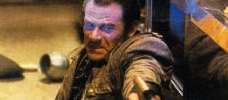
Trancers
1985 -
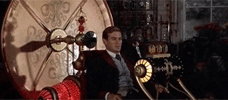
The Time Machine
1960 -

Groundhog Day
1993 -
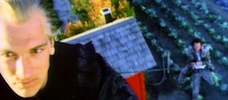
Warlock
1989 -

The Navigator
1988 -
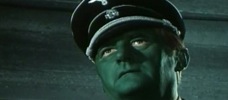
Tomorrow I’ll Wake Up and Scald Myself with Tea
1977 -
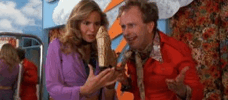
The Spirit of ‘76
1990 -
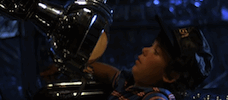
Flight of the Navigator
1986 -
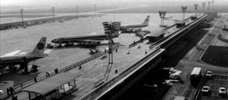
La jetée
1962 -
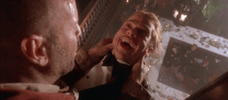
Twelve Monkeys
1995 -

Beastmaster 2: Through the Portal of Time
1991 -
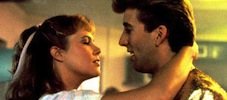
Peggy Sue Got Married
1986 -
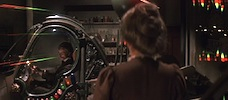
Time After Time
1979 -
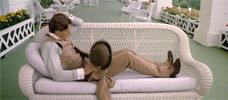
Somewhere in Time
1980 -
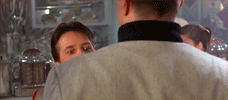
Back to the Future
1985 -

Back to the Future Part II
1989 -

Back to the Future Part III
1990 -
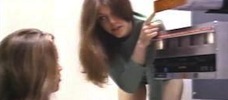
Idaho Transfer
1973 -
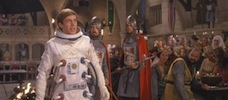
Unidentified Flying Oddball
1979 -
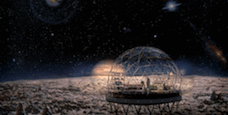
Slaughterhouse-Five
1972 -

The Lake House
2006 -
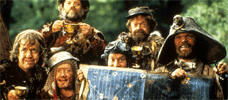
Time Bandits
1981 -

Doctor Who
1963–present -
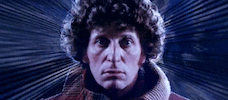
Doctor Who
1963–present
We don’t do comments anymore, but you may contact us here or find us on Twitter or Facebook.



